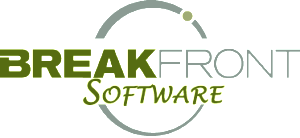
- Functionality – Is the kitchen software designed for my business or is it a generic application that I have to try and make fit my business? How long will it take me to get up and running? Will I have to try to configure the software on my own (or perhaps worse yet, with the help of “Bob” from Nehpal) or can I get genuine assistance from industry experts? Is it the right size for my business and will it scale with my company as we grow – and even if we have to consolidate? Who will train my staff and how long will it take them to become proficient?
- Installation – Do I have the right hardware or will I have to buy new equipment? Will I need an IT department to maintain the software, or perhaps a different skill set for my existing IT department?
- Cost – What is my initial investment in the kitchen software? What will be the required annual support costs? What will be the related hardware and IT support costs? What will be costs for training my staff?
So, how do you simplify the process?
- Find the Best Match For Your Business
The best kitchen software solution is one that is designed for your business. The time and expense involved with trying to make a generic application work for your operation almost always results in a process that is anything but a “solution.” It should also be right for your entire business, offering appropriate access and information to users as well as managers and business owners. - Ensure that the Kitchen Software Vendor Offers Fast, Expert Training and Support
Before making any software decision, spend some time with the vendor’s support team. Make sure they are available when you need them and find out exactly what you can expect in terms of getting up and running with the software, training resources for your staff, and support for the product. - Subscription Pricing – Software as a Service
We have entered the age of “Cloud” computing. The ideal kitchen software application today is hosted on servers accessible anywhere in the world via the Internet. This structure is so effective because it removes specialized hardware requirements and significant lowers (or even eliminates) the need for expensive IT departments. Installation and maintenance are done behind the scenes, meaning you can be up and running much more quickly than ever before. In addition, most cloud applications offer a subscription pricing model, meaning they offer the ultimate flexibility to only pay for what you need to pay for.

